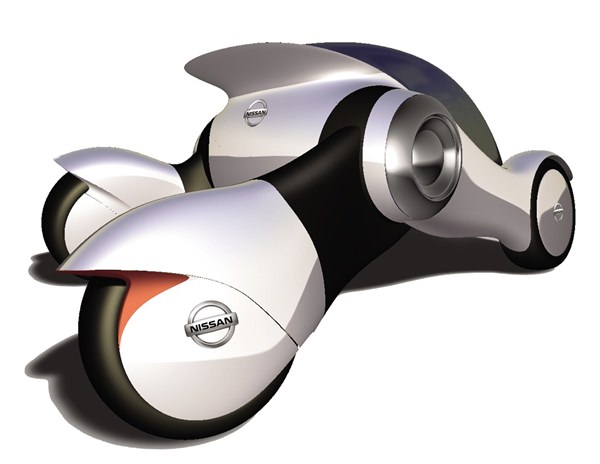
An interesting exercise was done in 2007, asking the manufacturers to show just where their cars would be in 2057.
Motoring had already taken some incredible leaps forward in the last 50 years. In 1957, who would have predicted that computers would dominate the automotive technology? Traction control, skid control and stability control. Variable valve timing electronically. Drive by wire, including electric steering. Airbags that deploy in an accident. 50 years ago people would have laughed if you had suggested it, but asking them to imagine what the next 50 years would hold!
In 2057 Audi envisions a hydrogen-powered vehicle that combines artificial intelligence with avenues of self-expression as it can change its external shape. This is obviously the ideal bank robber’s car for 2057!
GM’s effort was very imaginative. Much like the self-regulating traffic system found in the ant, nature’s best commuter, vehicle-to-vehicle communication and intelligence would allow GM’s ANT to act independently yet communicate with other vehicles to optimize traffic flow. All body panels are connected with electro-active polymer actuators, allowing reconfiguration of body panels, depending on their optimal street use. Another vehicle that will change its shape.
Honda’s entry presented a solar-hybrid powered Honda that allows carpoolers to take advantage of commuter lanes, share commuting costs and once near the individual passenger’s final destinations, splits from one to four separate and unique transportation modules. This takes the changing shape bodywork to another level, allowing metamorphosis into four from one.
The Mazda Motonari RX uses an ‘energy form’ that non-invasively integrates the driver with the vehicle making each indistinguishable from the other allowing the driver to experience the road psycho-somatically, receiving electrical stimulation to specific muscle groups. Four omni-directional wheels allow 360 degree movement.
The Mercedes-Benz SilverFlow utilized micro-metallic particles that could be arranged via magnetic fields in many different forms. This is similar to Audi’s idea of changing exterior shapes. The vehicle can also be completely dissembled into a mass of ferromagnetic material for easy storage, and can adapt and transform its shape to best suit its required purpose. (Transformers movie fore-runner?)
Nissan OneOne was a little R2D2, because Nissan predicts that by 2057 robots will have become an integral part of our lives. OneOne (pronounced “won-won”) was tomorrow’s live-in maid, driver and gardener, retrieving dry cleaning and groceries, tending to the children and guided by a real time GPS network.
Toyota predicted that due to limited ground space (especially in Japan!), vertical architectures have caused the transportation industry to create new pathways that also explore vertical space. The vehicle is powered by pollution with electronic dynamic driving instincts and structural adaptations to accommodate the user’s need for space.
By 2057, VW believes the urban area will have become unimaginably dense and the roadways have reached the point of total saturation. Volkswagen’s solution is an advanced autonomous vehicle that dynamically adapts to minimize its footprint in the city and its drag coefficient on the highways. The skin of the vehicle is made of hyper-efficient solar panels that power the vehicle.
Despite the fact that the different designers from Audi, GM, Honda, Mazda, Mercedes-Benz, Nissan, Toyota and Volkswagen were all working independently, there were some distinct common themes among the submitted designs. Taking the ‘most likely’ scenarios, the car of tomorrow will have omni-directional wheels, and a body shape that will adapt to the environment (and the whim of the driver). Electromagnetic energy will be used, and it may be solar extracted.
The first 10 year future projection does not predict the quantum shift to electric power but does mention autonomous vehicles. Robotic information is expected and much of AI (Artificial Intelligence) will be incorporated in tomorrow’s vehicles.
The next 10 year projection will be interesting as the e revolution continues to unfold.
 |
 |





